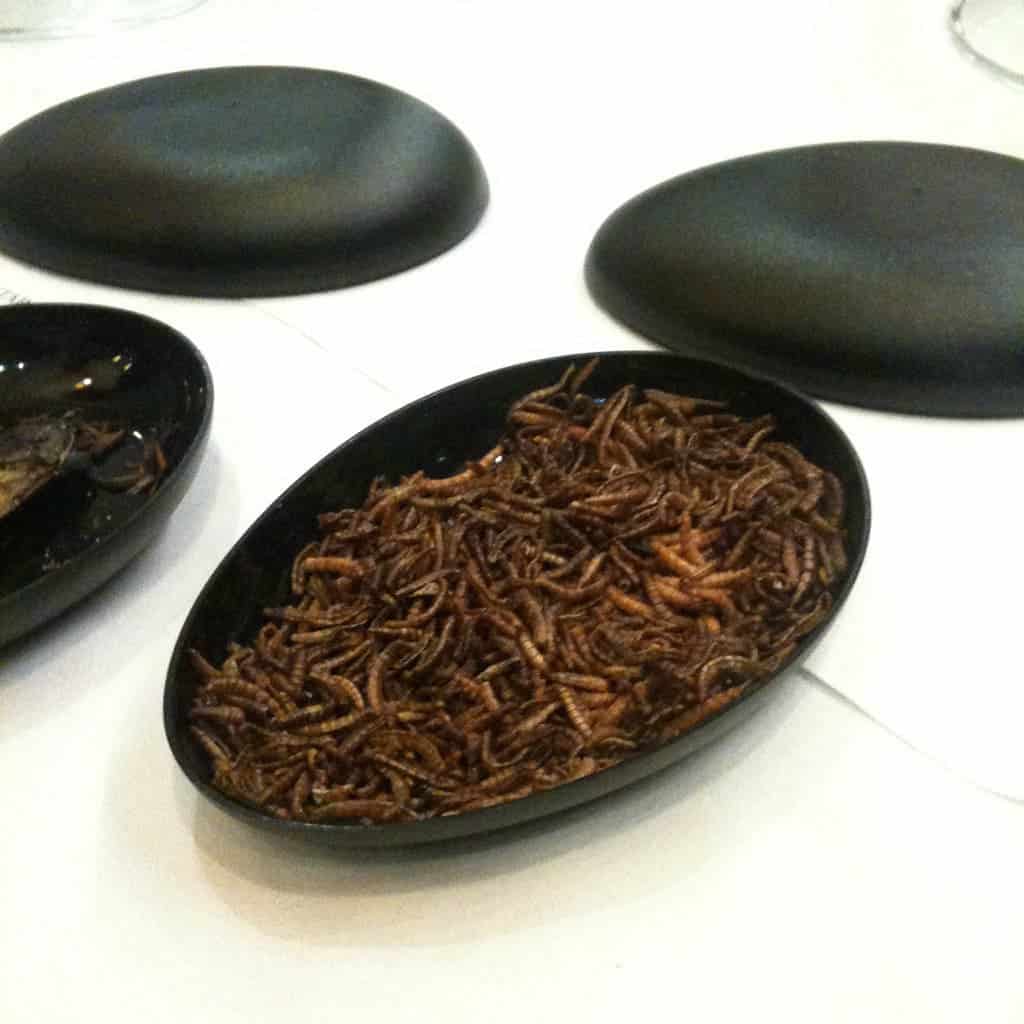By now, the fact that the world is eating too much meat should surprise no one. In addition to ethical concerns, meat is associated with a host of other environmental issues — greenhouse gas emissions, water usage, you name it. In recent years, a promising new solution has been emerging: lab-grown meat. The idea is to clone meat in a lab, a process that’s cruelty-free, eco-friendly, and cost-competitive with “real” meat. That last part is still a work in progress, but things are slowly looking up.
Now, a team of researchers put a new twist on that idea: what if instead of growing meat, we grow insect meat?

In theory, growing artificial meat isn’t that complicated. The technology is there, the rough infrastructure exists, but the ingredients are a pain — specifically, the nutrients needed to feed the cells. This generally comes in the form of delicate serums containing animal blood, which means that the resulting product is not only very expensive but also not cruelty-free. In this current state, cultured meat is hardly a reliable solution.
Insect meat, however, is different.
The tissues of invertebrates are different from those of mammals in a number of ways, some of which are not exactly clear. However, it is clear that insects are more resilient to a range of different conditions (temperature, pH, humidity), and they are also less demanding in terms of nutrients. In simple terms, mammals need a lot of micronutrients, while insects don’t.
So because their metabolism is simpler, growing insect cells might also be easier. This would make cultured insect meat more scalable and dramatically reduce costs. There’s also another advantage to cultivating insect cells: if they have sufficient nutrients, they endlessly propagate.
In a new study, Tufts biomedical engineer David Kaplan and colleagues describe how they can not only grow insect cells, but also make robots from them — or rather, robot components, such as bio-actuators. They also describe how other researchers built bio-actuators from insect cells in a variety of conditions.
“Insect muscle culture is prominent in the field of soft robotics. Researchers have constructed small scale robots or “bio-bots” from both mammalian and invertebrate biomass. Insect-derived bio-bots may be superior to bio-bots constructed from mammalian tissues or cells because insect tissue is tolerant to a wide range of environmental conditions,” the study reads.
Of course, while this is encouraging, growing insects for eating is a completely different affair — and researchers haven’t actually done this yet, they’ve simply shown that it could be done. We don’t really know how it would taste, and it wouldn’t be anything like an actual steak. You’d need to add a structure and micro-scaffolding to give it an edible form. Overall, there’s still a long way to do before it can hit the shelves.
“Despite this immense potential, cultured insect meat isn’t ready for consumption. Research is ongoing to master two key processes: controlling development of insect cells into muscle and fat, and combining these in 3D cultures with a meat-like texture,” said Natalie Rubio, lead author of the new study. “For the latter, sponges made from chitosan – a mushroom-derived fiber that is also present in the invertebrate exoskeleton – are a promising option.”
However, this potential justifies further investigation. At the current moment, our global consumption of meat just isn’t sustainable, and researchers are well aware of that.
“Due to the environmental, public health and animal welfare concerns associated with our current livestock system, it is vital to develop more sustainable food production methods,” Rubio added.
Accelerating development of sustainable foods can be done — whether or not insects will play a part of that remains to be seen.
The study was published in the journal Frontiers in Sustainable Food Systems.
Was this helpful?



